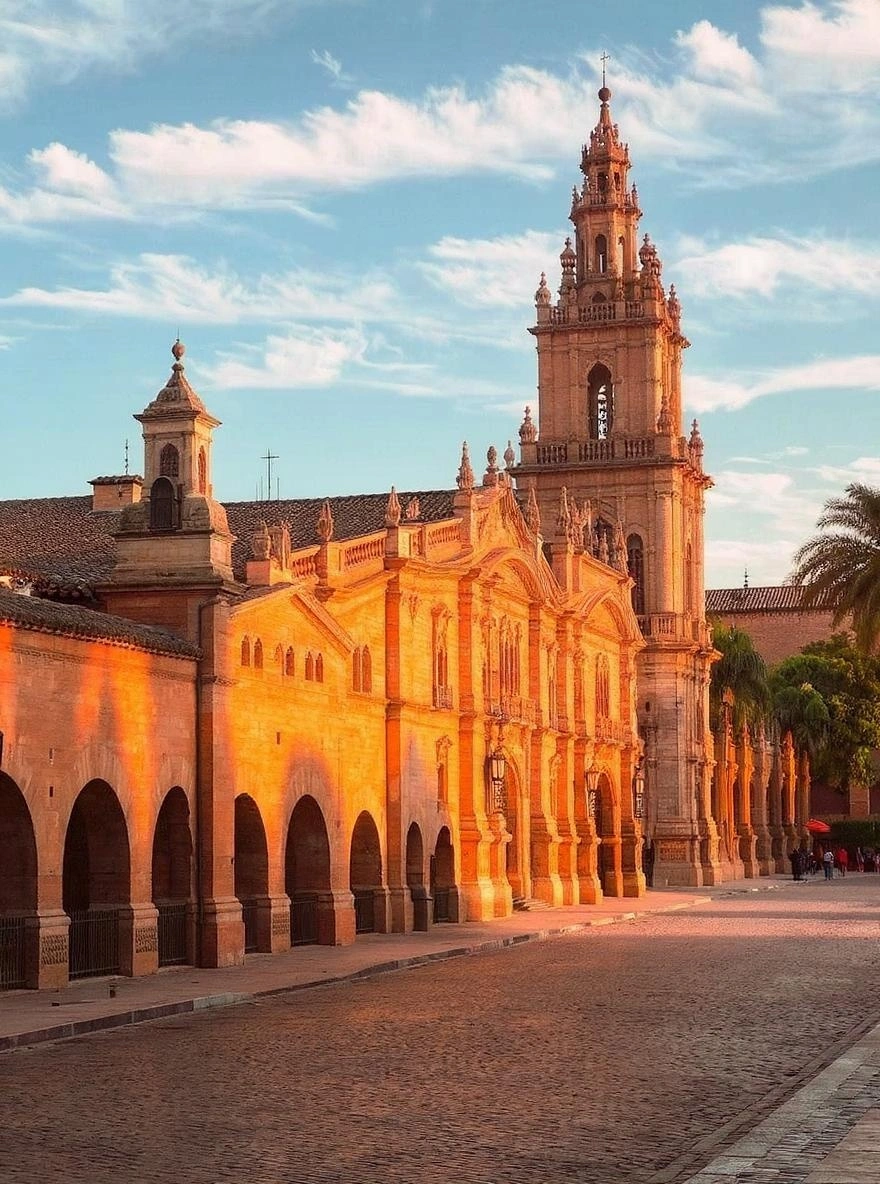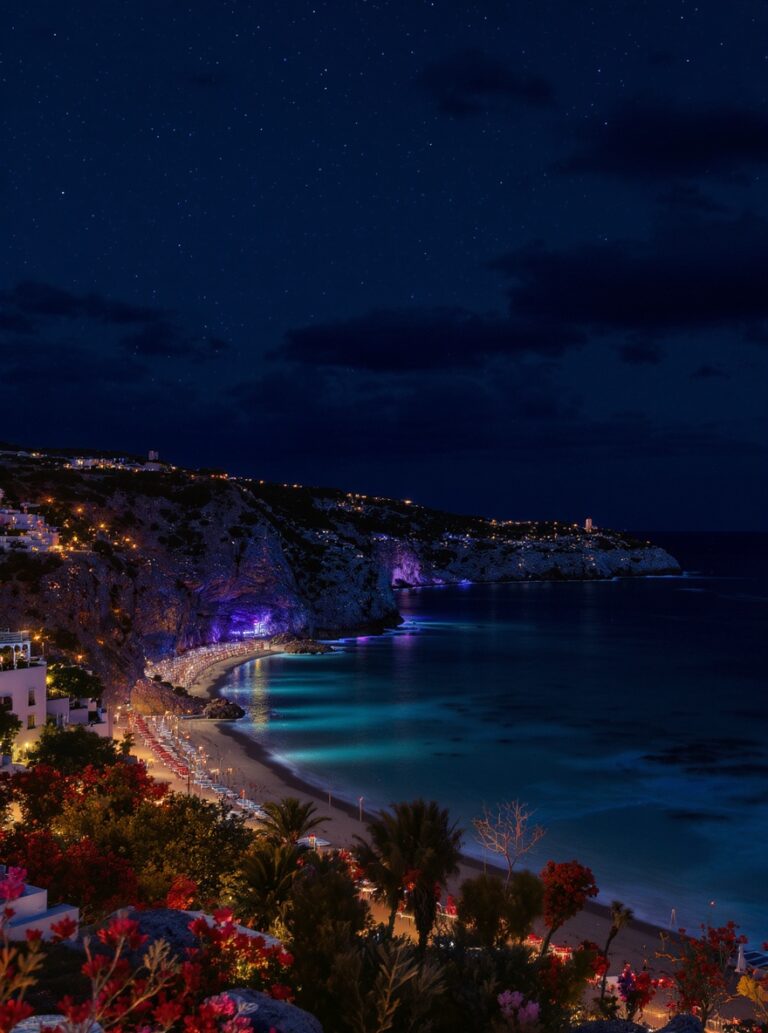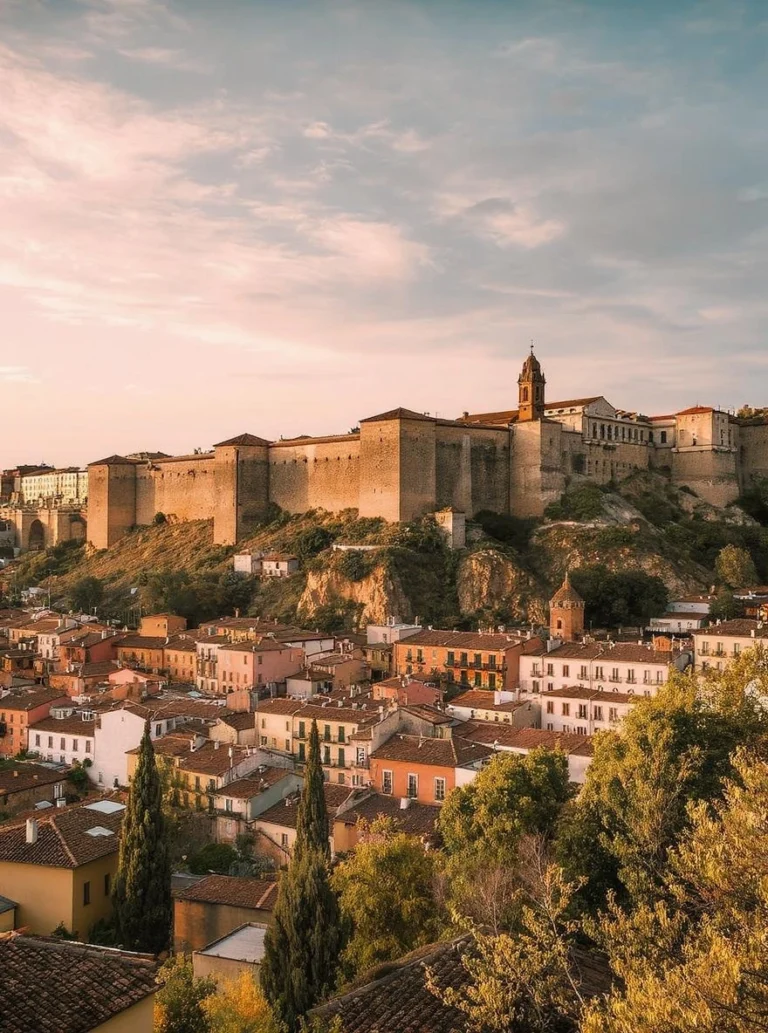Seville things to do That Make It Spain’s Top City
Table of Contents
Step into Seville and you’re instantly captivated by its seductive blend of Moorish splendor, vibrant flamenco rhythms, and sun-drenched plazas perfumed with orange blossoms. This Andalusian jewel isn’t just another Spanish city—it’s a full-sensory experience that stays with you long after you’ve returned home.
This guide goes way beyond your typical tourist checklist. I’m sharing both the must-see Seville things to do and those hidden corners where locals gather for sunset drinks in plaza squares dappled with orange tree shade. Whether you’ve got 48 hours or a week to explore, I’ll help you make the most of your time in this extraordinary city with insider tips, strategic timing advice, and unique perspectives that bring the cobblestone streets of Seville to life.
Experiencing Seville’s Iconic UNESCO World Heritage Sites
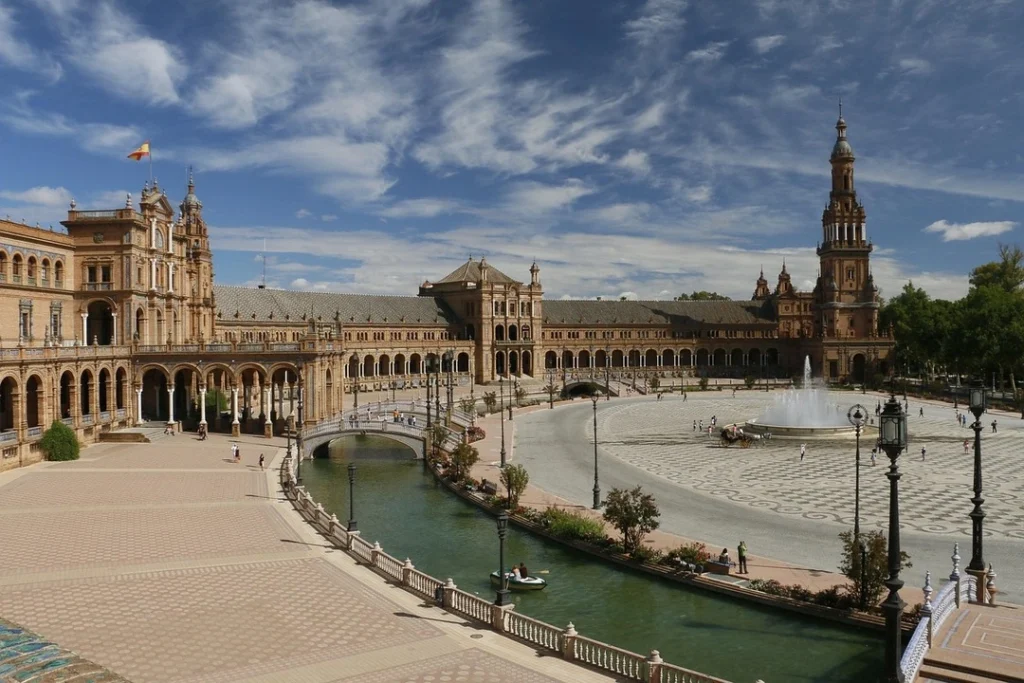
Real Alcázar of Seville: A Royal Tapestry of History and Beauty
If you only have time for one thing to do in Seville, make it the Real Alcázar. This mind-blowing palace complex isn’t just the most iconic landmark in the city—it’s the oldest European royal palace still in use today. Built in the 14th century for Christian king Peter of Castile on the site of a former Muslim fortress, this UNESCO World Heritage site perfectly captures Seville’s multicultural soul.
The moment you step inside, you’re surrounded by an exquisite fusion of Mudéjar and Christian architecture that’ll leave your jaw on the floor. We’re talking intricately carved facades, lavish gold ceilings, and richly decorated tiles that showcase centuries of artistic mastery.
The palace gardens are equally spectacular—lush, fragrant spaces filled with orange trees, tinkling fountains, and hidden alcoves where you can escape the bustle. Don’t miss the atmospheric Maria Padilla Baths, the stunning Ambassador’s Hall, and the tranquil Mercury’s Pond.
Pro Tips:
- Book tickets online at least a day in advance—the lines can be brutal, especially in peak season
- A guided tour is absolutely worth it for the historical insights (Game of Thrones fans should look for specialized tours featuring filming locations)
- Arrive right when they open (9:30am) to beat the crowds
- Allow at least 2 hours to do it justice—though you could easily spend half a day here
Seville Cathedral and La Giralda: A Testament to Grandeur
“Let us build a church so large that those who see it will think we are mad.” That’s what Seville’s cathedral builders declared, and boy, did they deliver! When it was completed in the 16th century, this magnificent structure surpassed Constantinople’s Hagia Sophia as the world’s largest cathedral.
Built on the site of a former mosque, the cathedral still incorporates elements of its Islamic predecessor—most notably the Giralda tower, which was once a minaret and now serves as the cathedral’s iconic bell tower. Instead of stairs, the tower has a series of 35 gently sloping ramps that were designed for horseback access (though you’ll be using your own two feet these days). The reward for the climb? Some of the most incredible panoramic views across Seville.
Inside, don’t miss Christopher Columbus’s elaborate tomb (yes, his remains actually are here—after making quite the posthumous journey around the Atlantic) and the extraordinary domed Chapter House with its gorgeous Murillo paintings.
Visitor Strategy:
- Visit around 4:30pm when the afternoon light streams beautifully through the stained glass and most tour groups have departed
- Book skip-the-line tickets online to save yourself potentially hours of waiting
- If you’re an architecture enthusiast, consider booking the special roof tour (reserve about a week ahead)
Immersing in Seville’s Vibrant Culture
Flamenco: The Heartbeat of Seville
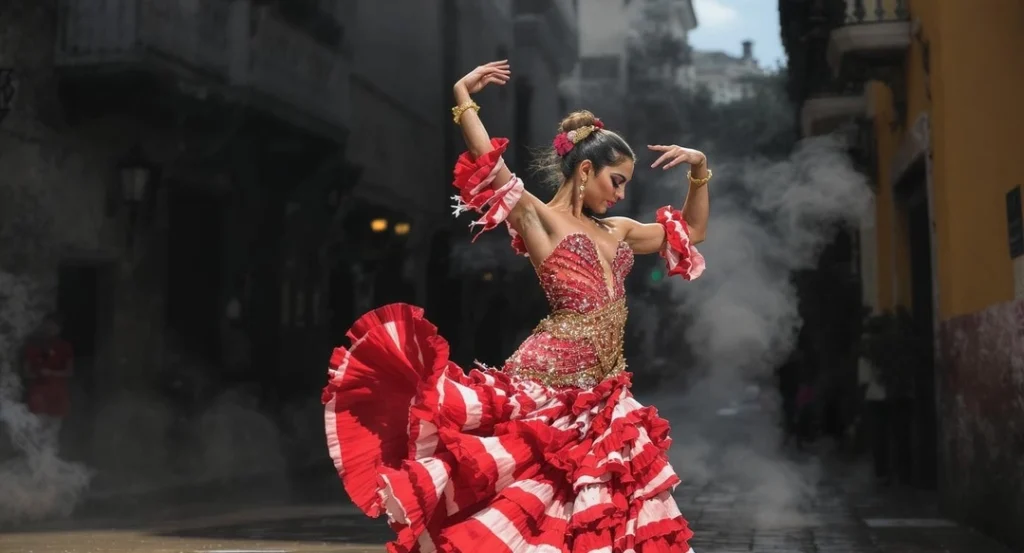
Watching a flamenco performance in Seville is like seeing jazz in New Orleans or opera in Milan—you’re experiencing the art form in its birthplace. This passionate dance, with its dramatic footwork, expressive hand movements, and soul-stirring music, was born right here in Andalusia and remains the pulsing heartbeat of Sevillian culture.
While you’ll find flamenco shows throughout the city (and plenty of tourist traps), these venues offer truly authentic experiences:
- Baraka Sala Flamenca: An intimate venue with stunning Mudejar architecture where you’ll sit close enough to see the emotion in performers’ eyes
- Museo del Baile Flamenco: Combine a museum visit with a show in this historical venue that traces flamenco’s evolution
- Tablao El Arenal: Recognized by the New York Times for its outstanding performances (with optional dinner packages available)
Tapas: A Culinary Journey
If Spain has given the world one perfect culinary invention, it’s tapas—and exploring what to do in Seville absolutely must include a tapas crawl. These small plates are designed for sharing, savoring, and pairing with local wines or ice-cold beers.
For an unforgettable tapas experience, check out:
- El Rinconcillo: Dating back to 1670, this is Seville’s oldest tapas bar. The atmosphere is authentically old-school with hams hanging from the ceiling and your bill calculated in chalk on the countertop.
- Duo Tapas: For inventive twists on traditional favorites, including some with modern Asian influences
- Mercado Lonja del Barranco: A beautiful marketplace with over 20 food stalls where you can sample everything from freshly sliced jamón to creative seafood dishes
- Bar Alfalfa: For no-frills, delicious traditional tapas in the heart of the old town
- Bar el Commercio: Famous for its churros and coffee, but also serves excellent traditional tapas
- Ovejas Negras: A modern take on tapas with a slightly hipster vibe
Can’t decide? Join a guided tapas tour like “Devour Seville Tapas, Wine & History” for a curated experience with cultural context and priority seating.
Exploring Traditional Neighborhoods
Barrio Santa Cruz: The Former Jewish Quarter
Getting lost in Santa Cruz isn’t a problem—it’s the whole point! This enchanting maze of narrow streets, orange trees, and hidden tavernas was once Seville’s Jewish quarter, and today it’s a captivating place to wander without a specific agenda.
The neighborhood’s irresistible charm comes from its tiny alleyways that suddenly open onto sunny plazas, its flower-draped balconies, and its abundance of intimate cafes where you can pause for a cold tinto de verano (summer wine) or a coffee.
Don’t miss the impressive Countess of Lebrija Palace, the picturesque Plaza de Cabildo, and Casa de Pilatos (a stunning 16th-century palace that’s often overlooked by tourists).
The neighborhood is blissfully quiet in the mornings—perfect for photography and peaceful exploration—and comes alive in the evenings as tapas bars fill with locals and visitors alike.
Triana Neighborhood: Birthplace of Artists and Pottery
Just across the Guadalquivir River, Triana feels like a completely different city. This proudly independent neighborhood has long been the birthplace of flamenco artists, celebrated bullfighters, and Seville’s renowned pottery and tile industry.
Start with a stroll down Calle Betis, a waterfront street lined with colorfully painted facades and river-view restaurants. Then dive into Triana Market, built on the ruins of San Jorge Castle (which once served as headquarters of the Spanish Inquisition).
The market is a feast for all senses—fresh produce, aromatic herbs, glistening fish, and a selection of cafes and tapas bars where you can sample local specialties. Don’t skip the small but fascinating museum next door, which displays archaeological finds and former prisoner cells from the castle.
Food enthusiasts should consider the “Triana Market Tour with Tastings” for a deeper dive into the area’s culinary heritage.
Unique Perspectives and Modern Marvels
Metropol Parasol (Las Setas): The Mushrooms of Seville
Looking for unusual things to do in Seville? Head to the world’s largest wooden structure, affectionately nicknamed “Las Setas” (The Mushrooms) by locals. This futuristic, undulating canopy stretches across Plaza de la Encarnación like a cluster of giant mushrooms, creating a surreal contrast with the historic buildings surrounding it.
Take the elevator up to the panoramic walkway for unbeatable views across the city, especially magical at sunset when Seville’s buildings glow golden in the fading light. As darkness falls, a light show transforms the structure into a colorful art installation.
Beneath the structure, you’ll find an archaeological museum displaying Roman colony remains discovered during construction, plus a lively food market. While admiring the structure from below is free, the rooftop walkway costs a few euros—but includes a voucher for a drink at the rooftop bar.
Guadalquivir River: A Historic Lifeline
The Guadalquivir isn’t just a pretty waterway—it’s Spain’s only navigable river and the lifeblood of Seville for centuries. From this river, Magellan’s expedition set sail on the first circumnavigation of the globe, and for over 200 years, it was the main gateway for American treasures entering Europe.
To experience the river that shaped Seville’s destiny:
- Take a scenic river cruise to see landmarks from a fresh perspective (booking online in advance is recommended)
- For the adventurous, kayaking or paddleboarding offers a unique way to experience the city
- Join locals for evening paseos (strolls) along the riverbanks, especially popular in summer as the water creates a cooling effect
Plaza de España & Maria Luisa Park: Grandeur and Green Spaces
If any place in Seville will make your Instagram followers green with envy, it’s the spectacular Plaza de España. Built for the 1929 Ibero-American Exhibition, this semi-circular plaza faces the Guadalquivir River—a deliberate design choice symbolizing Spain’s embrace of its former American colonies.
The plaza blends Renaissance and Moorish styles with breathtaking tile work, featuring alcoves that represent each Spanish province with their own unique ceramic designs. If it looks familiar, that’s because it served as a filming location for Star Wars Episode II. You can rent rowboats to paddle around the small canal that runs through the plaza, or just soak in the atmosphere as flamenco dancers often perform spontaneously in the open space.
Adjacent to the plaza lies Maria Luisa Park, Seville’s green lung and largest park. This lush botanical garden is perfect for escaping the midday heat, with ceramic-tiled fountains, palm and orange trees, and exotic plants creating a verdant paradise. The park offers rowboat rentals on its small lake, plus horse carriages and tandem bikes for exploring its shaded paths.
Paseo de las Delicias: A Riverside Stroll
One of my favorite things to do in Seville after dinner (or perhaps after too many tapas) is taking a digestive walk along Paseo de las Delicias. This broad, tree-lined avenue follows the canal and offers beautiful views of bridges, historic buildings, and the shimmering river.
Start near the Palacio de San Telmo and continue past Maria Luisa Park, taking in Las Delicias Gardens, the charming Costurero de la Reina Tower, and eventually reaching the iconic Torre del Oro (Golden Tower). The walk is particularly magical around sunset, when golden hour light bathes everything in warm tones and locals come out to socialize along the waterfront.
Beyond the Mainstream: Art, History & Hidden Gems
Seville’s Diverse Museums
While the big-ticket attractions get all the attention, Seville’s museum scene offers remarkable depth for art and history enthusiasts:
Museum of Fine Arts (Bellas Artes): Spain’s second most important art museum after Madrid’s El Prado, housed in a former convent. Its collection spans from medieval religious works to 20th-century paintings, with masterpieces by El Greco, Velásquez, Murillo, and Zurbarán. The museum is free for EU residents and just €1.50 for everyone else—an incredible bargain.
Archaeological Museum: Chronologically traces Seville’s fascinating evolution from prehistoric settlements through Roman and Moorish periods.
Museum of Arts and Traditions: Dedicated to traditional Andalusian crafts, ceramics, and cultural practices—a window into everyday life throughout history.
Hospital de los Venerables Sacerdotes: This former hospice for elderly priests now houses an impressive collection including works by Murillo and Velázquez, plus an ornate Baroque church with stunning frescoes
Casa Palacio de la Condesa de Lebrija: This aristocratic residence contains one of the world’s most impressive private collections of Roman mosaics, rescued from the nearby Italica ruins.
Archivo de Indias: A true hidden gem that holds the most valuable documents related to Spanish exploration and colonization of the Americas. Entry is free, and the building itself is a UNESCO World Heritage site.
Stunning Palaces Beyond the Alcázar
While the Alcázar gets all the glory, Seville hides several other spectacular palaces worth discovering:
Casa de Pilatos: A beautiful palace blending Mudéjar, Gothic and Renaissance styles, with tranquil courtyards and exquisite tile work. Much less crowded than the Alcázar but nearly as impressive.Palacio de las Dueñas: This 15th-century palace was home to the Duke of Alba and birthplace of poet Antonio Machado. Its gardens and courtyards are especially lovely, and Monday afternoons offer free entry.Hospital de la Caridad: This former hospice features an opulent, gilded 17th-century chapel and masterworks by Baroque painters including Murillo. It’s free on Sunday afternoons.
Game of Thrones Filming Locations: A Fan’s Quest
Calling all GOT fans! Seville served as a major filming location for Dorne, and hunting down these sites makes for a fun themed adventure:
Alcázar: The primary filming location used for Dorne’s Water Gardens and Sunspear. Key filming spots include the Maria Padilla Baths, Ambassador’s Hall, Mercury’s Pond, and Gardens.
Seville Shipyard: This medieval shipyard is one of the best-preserved in the world and appeared briefly in the series.
Italica: The Roman amphitheater served as the Dragonpit in King’s Landing—just a 15-minute trip from central Seville.
For the ultimate experience, book a specialized “Seville Game of Thrones Tour” that combines filming insights with historical context.
Beyond the City: Essential Day Trips from Seville
Córdoba: A Blend of Cultures
Just 1.5 hours from Seville by car or train, Córdoba offers an incredible day trip centered around its Great Mosque (Mezquita-Catedral)—one of the most remarkable buildings in the world. This UNESCO site began as a mosque in the 8th century before a cathedral was bizarrely constructed right in its center, creating an architectural fusion like nowhere else.
Wander through Córdoba’s Jewish Quarter, Roman Theater, and flower-filled courtyards for a perfect complement to your Seville explorations. Consider the organized “Cordoba, the Mosque, and Carmona Day Trip” for a hassle-free experience.
Granada and the Alhambra: Moorish Masterpiece
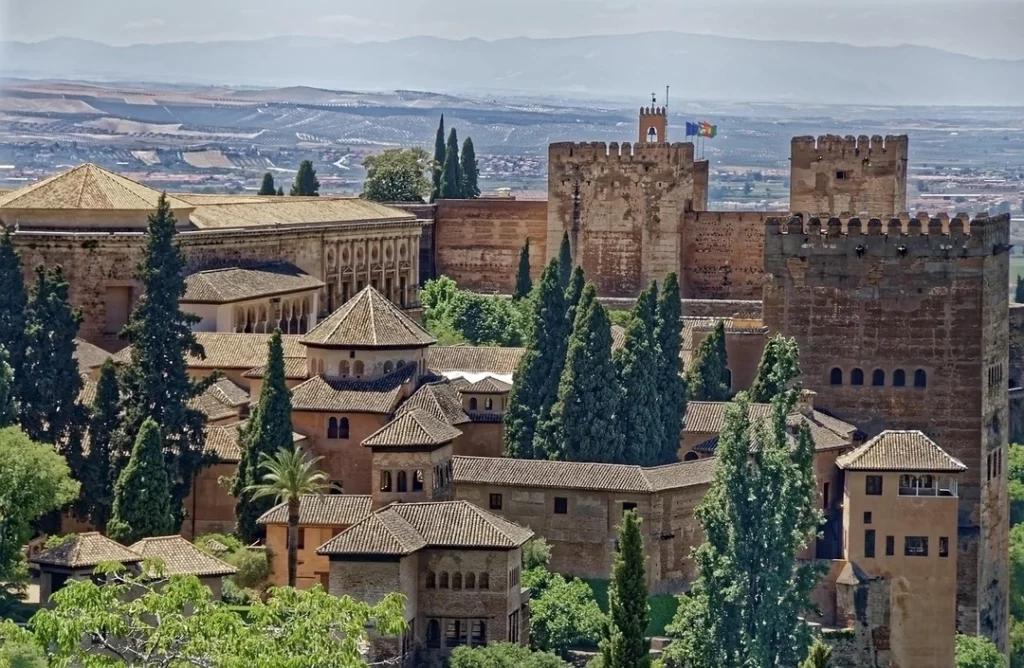
About 155 miles east of Seville lies Granada, home to the breathtaking Alhambra—perhaps Spain’s most magical monument. This 9th-century fortress-palace complex showcases the pinnacle of Islamic architecture, with mind-bogglingly intricate geometric patterns, tranquil courtyards, and gardens designed to mimic paradise on earth.
While it’s a long day trip, it’s absolutely possible (and worthwhile) if you plan carefully. Book Alhambra tickets months in advance and consider an organized tour like “Alhambra and Albaicin Small Group Tour” to maximize your time.
Italica: Roman Ruins and Imperial Birthplace
Just 15 minutes from Seville lies one of Spain’s best-preserved Roman sites. Italica was once a prosperous Roman city and the birthplace of two emperors (Trajan and Hadrian). Today, you can explore its grand amphitheater, well-preserved mosaics, and the remains of luxurious Roman homes with intact floor designs.
Game of Thrones fans will recognize the amphitheater as the Dragonpit from the series. The “Italica Roman City and Medieval Monastery Tour” combines this site with other nearby attractions for a well-rounded experience.
Pueblos Blancos (White Villages) and Ronda: Picturesque Landscapes
The White Villages of Andalusia offer a glimpse into traditional Spanish life with their dazzling white-washed buildings cascading down hillsides. Ronda, perched dramatically atop a deep gorge divided by the spectacular Puente Nuevo bridge, is the most famous.
Don’t miss Setenil de las Bodegas, where houses are built directly into overhanging rock formations—one of the most unique settlements in Spain. While you could rent a car to explore independently, an organized “Pueblos Blancos and Ronda” tour takes the stress out of navigating mountain roads.
Caminito del Rey: Thrilling Hike
For adventure seekers, this reconstructed pathway takes you on a 7-kilometer journey through a stunning gorge, with sections suspended 100 meters above the ground on narrow boardwalks clinging to vertical cliff faces. Once considered the world’s most dangerous walkway, it’s now safely rebuilt but retains its dramatic setting.
The mostly flat trail is suitable for anyone with reasonable fitness and a head for heights. Tours from Seville typically include transportation and entrance fees.
Planning Your Seville Adventure
Best Time to Visit
Timing your visit to Seville is crucial—summer temperatures regularly reach into the forties (Celsius), sending locals fleeing the city entirely. Avoid June through September unless you truly love sweltering heat.
The sweet spots are March to May and September to October, when temperatures are pleasant and the city’s gardens and parks are lush and blooming. Spring brings the famous Feria de Abril (April Fair) and Semana Santa (Holy Week) celebrations, though accommodation prices rise accordingly.
Winter in Seville is also lovely, with mild temperatures (averaging 15°C/60°F) and fewer tourists. December and January offer Christmas markets and festive decorations with none of the frigid temperatures found in northern Europe.
Getting There & Around
Arriving:
- By Air: Seville International Airport (SVQ) is just 20 minutes by taxi (€25) or 35 minutes by airport bus (€4) from the city center. If flights to Seville are limited or expensive, consider flying into Málaga and taking a train or bus to Seville.
- By Train: Spain’s excellent high-speed rail network connects Seville to Córdoba (45 min), Madrid (2h 30m), Málaga (2h), and Granada (2h 45m).
Getting Around:
Seville is wonderfully walkable—most major attractions are within a 20-minute stroll of each other. For longer journeys, consider:
- Rental bikes (available through apps like Lime or the city bike-sharing system Sevici)
- Guided bike tours for orientation
- Public buses and trams for outlying areas
Where to Stay
Location matters in Seville—I highly recommend staying as central as possible to take advantage of the city’s walkability and to experience the atmospheric evenings. The historical Santa Cruz district offers charm and convenience, while Triana provides a more authentic, less touristy experience.
Accommodation options for all budgets:
- Luxury: Vincci Seleccion Unuk, Hotel Alfonso XIII (a Seville institution), or EME Catedral Hotel with its rooftop terrace offering breathtaking Giralda views
- Mid-Range: Hostal Sol 4 offers excellent value in a central location
- Budget: Hotel Patio de las Cruces provides character without breaking the bank
- Unique: Hotel Amadeus & La Musica features a classical music theme and rooftop views of the Cathedral
Summer tip: If visiting during warmer months, prioritize accommodation with air conditioning and ideally a rooftop pool to combat the heat.
How Many Days in Seville?
For the ideal Seville experience, I recommend three full days—enough time to see the main attractions while also allowing for spontaneous discoveries, leisurely tapas crawls, and soaking up the city’s unique atmosphere.
With two days, you can cover the major sites but will need to maintain a brisk pace. If you can swing four or more days, you’ll have time to add day trips to nearby destinations like Córdoba or the White Villages.
FAQs
What is Seville famous for?
Seville is renowned for its flamenco heritage, stunning Alcázar palace, massive Cathedral (and Giralda tower), delicious tapas scene, and vibrant street life. It’s also celebrated for its Moorish architecture, orange trees, and as the setting for the opera “Carmen” and “The Barber of Seville.”
Is Seville a walkable city?
Absolutely! Seville’s historic center is compact and pedestrian-friendly, with most major attractions within a 20-30 minute walk of each other. The flat terrain makes it easy to explore on foot, though bikes are also a popular option.
Can you swim in Seville?
There’s no beach in Seville, but you can take a day trip to nearby Matalascañas beach (about 1 hour away) or head to Cádiz (1.5 hours) for beautiful Atlantic beaches. Many hotels in Seville have pools—a welcome relief during the hot summer months.
What are some unique things to do in Seville?
Beyond the main attractions, consider hunting Game of Thrones filming locations, kayaking on the Guadalquivir River, visiting the hidden palaces like Casa de Pilatos, catching sunset from Metropol Parasol, or exploring the ceramic workshops in Triana.
Is it advisable to book attractions in advance in Seville?
Yes! Popular sites like the Alcázar and Cathedral can have hours-long queues, especially in peak season. Booking online is highly recommended, particularly for the Alcázar, which often sells out days in advance.
Can I drink tap water in Seville?
Yes, Seville’s tap water is completely safe to drink, though many visitors find the taste a bit different due to its mineral content. If you prefer, bottled water is inexpensive and widely available.
What are some traditional Sevillian dishes to try?
Don’t miss gazpacho (cold tomato soup perfect for hot days), salmorejo (thicker tomato soup with ham and egg), espinacas con garbanzos (spinach and chickpeas), and rabo de toro (oxtail stew). And of course, endless varieties of tapas!
Conclusion: Your Unforgettable Seville Journey Awaits
Seville isn’t just a city you visit—it’s a place you feel. From the moment you step into the dappled shade of its orange tree-lined streets or hear the passionate strains of flamenco echoing from a hidden courtyard, you’ll understand why this Andalusian gem captivates travelers from around the world.
Whether you’re standing awestruck in the ornate chambers of the Alcázar, sipping sherry in a centuries-old tapas bar, or watching the sunset turn the Guadalquivir River to molten gold, Seville offers experiences that engage all your senses and linger in your memory long after you’ve returned home.
This city treads the perfect balance between honoring its rich multicultural past and embracing a vibrant present. It invites you to slow down, to savor, and to surrender to its undeniable charm. So pack comfortable walking shoes, bring your appetite for both food and adventure, and prepare to fall helplessly in love with one of Spain’s most magical destinations.

